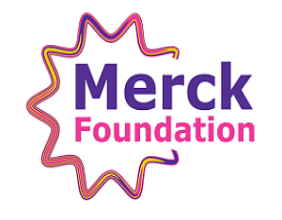Highlights
- "Bar" is commonly used as slang to represent one million dollars.
- This term is prevalent in both financial circles and pop culture.
- The use of "bar" simplifies financial discussions, particularly when referencing large sums of money.
In everyday conversations about money, especially in business and financial sectors, certain slang terms have emerged to simplify complex figures. One such term is "bar," which is commonly used to represent one million dollars. While the term is widely understood in informal contexts, it may raise questions for those unfamiliar with its origins or usage. In this article, we will explore the meaning, history, and applications of "bar" as it relates to one million dollars.
What Does "Bar" Mean?
In financial slang, "bar" is shorthand for one million dollars. For example, if someone says, "The company made 10 bars last quarter," it means the company generated ten million dollars in revenue or profit. This abbreviation is a way of simplifying large sums, especially in environments where quick, informal communication is important.
The term "bar" is particularly useful in industries where large amounts of money are discussed routinely, such as in real estate, investment banking, or entrepreneurship. By using slang like "bar," professionals can quickly convey the scale of financial figures without resorting to lengthy or complex language.
Origins of the Term "Bar"
The origins of the slang term "bar" are somewhat unclear, but it is believed to have developed in the early 20th century. Some speculate that the term came from the gold standard, when bars of gold were commonly traded and valued at large amounts. Others suggest that "bar" may have simply been a convenient abbreviation to refer to large, round numbers, much like other financial slang terms that have evolved over time.
In addition to its use in finance, the term "bar" has also been popularized in pop culture, particularly in movies and music. For example, it is not uncommon to hear phrases like "stacking bars" or "making bars" in hip-hop music, further cementing the term's presence in mainstream language.
The Role of "Bar" in Financial Discussions
In financial settings, the use of "bar" allows for quicker and more efficient communication. Instead of saying "one million dollars," individuals can simply say "bar" and still be understood. This shorthand is particularly common in fast-paced industries like stock trading, private equity, or venture capital, where large sums of money are frequently mentioned, and time is of the essence.
Additionally, "bar" can help avoid confusion when dealing with multiple zeros in a financial figure. For instance, it can be much easier to say "three bars" than to say "three million dollars" repeatedly in a discussion about investments or revenue generation. This simplification helps streamline conversations without losing any important details.
"Bar" in the Context of Investments and Finance
The term "bar" has specific relevance when discussing investments, particularly when talking about venture capital or private equity deals. Entrepreneurs and investors may use the term when negotiating the value of a business or startup, and it helps to quickly communicate the size of the deal. For instance, a company may be valued at several bars, indicating a valuation in the millions.
In real estate, "bar" is also used to refer to large sums of money, often in connection with property prices or deals. In these cases, real estate brokers, developers, and investors might refer to the price of a property in bars to keep discussions fast-paced and efficient.
Popularity of "Bar" in Pop Culture
While "bar" is most commonly used in professional financial settings, it has also made its way into pop culture. In particular, the term has been adopted by the music industry, especially in hip-hop and rap. Many songs and lyrics make reference to "bars," not just as a symbol of wealth but also as a representation of success, hard work, and achievement. The use of "bar" in this context ties the idea of financial accomplishment with artistic prowess, giving it an extra layer of meaning beyond mere currency.
In addition to music, movies and television shows often use "bar" to depict the lifestyles of the wealthy and successful. By referring to money in terms of "bars," writers and characters can emphasize the magnitude of a financial situation without bogging down the conversation with precise numbers.
The Future of "Bar" in Financial Vernacular
As the global economy continues to grow and financial discussions become more complex, the use of slang terms like "bar" is likely to persist. It provides a quick and easy way to talk about large sums of money, and its usage has spread beyond the confines of professional finance. As long as there is a need for shorthand communication in the business world, terms like "bar" will remain integral to how people talk about and understand large financial amounts.
Additionally, as new financial instruments and markets emerge, new slang terms may arise, further expanding the lexicon of financial professionals and the general public. However, "bar" has proven to be a versatile and widely understood term, making it a staple in both casual and professional conversations.
Conclusion: The Simplicity and Power of "Bar"
"Bar" is a straightforward and effective piece of financial slang that simplifies the discussion of large sums of money. Its widespread usage across various sectors of business, investment, and even pop culture makes it an important term for quickly conveying financial information. While the term's origins may be uncertain, its practicality and universality are clear. Whether used to describe a company's earnings, the value of an investment, or simply to boast about financial success, "bar" remains a key term in the language of money.




_06_19_2025_05_49_07_385844.jpg)